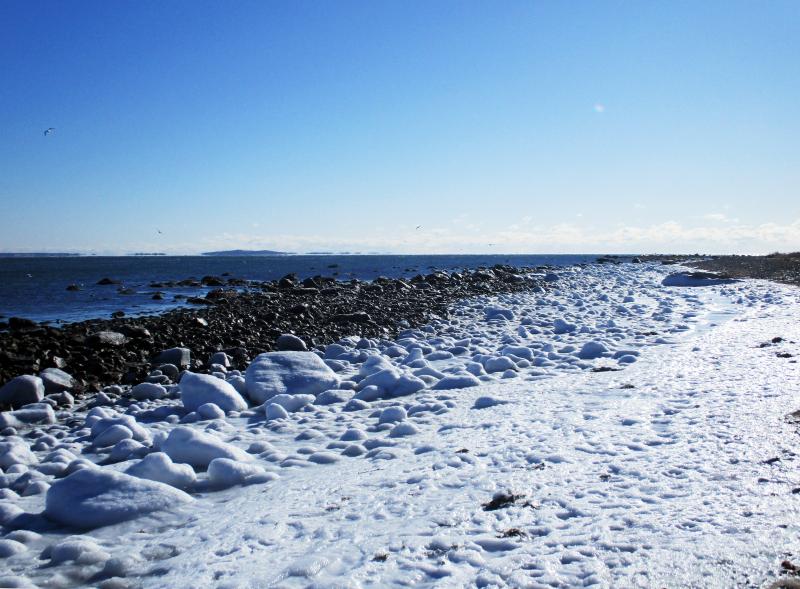Lloyd Center Braves Arctic Chill on New Year’s Day Walk
A small group of three die-hard nature enthusiasts attended the 27th annual Lloyd Center New Year’s Day walk at Gooseberry Neck Island, on a day when arctic temperatures forced cancellation of many other events around the region. The low turnout was expected, given that this was the second coldest walk on record for the event.
Without proper attire, any participant might not have survived the initial walk across the wind-whipped causeway. But these folks were prepared and enthusiastic and endured the entire walk along the calmer east shoreline, which is more protected from the northwest winds. That was actually the easy part, as we returned through a “sheltered” central walking path, this was essentially like walking through a tunnel of wind chill. When our group had encountered another trio (the only other humans encountered!) along the shoreline en route to the south tip of the island, a brief exchange occurred with folks commenting on what a beautiful day it was. From the above account, one might wonder, how could this possibly be?
A draw in any season, and especially this year during an “irruption” year for the species, is the prospect of encountering a Snowy Owl. At minimum, this possibility resulted in good conversation and anticipation that surely warmed us all during the long walk down the causeway. And a sighting makes any day instantaneously beautiful! But spotting a Snowy is never a guarantee, and on this frigid day, the owl was off hiding somewhere (if not watching us and chuckling from some secluded perch nearby).
So on to what is a central theme of this walk, the diversity of winter waterbirds always present. This includes waterfowl (ducks, geese) and shorebirds, both of which spend the winter here. Ducks forage along the mostly unfrozen bays, while shorebirds can be observed feeding along the intertidal zone at lower tides. Sea ducks encountered on the walk included Bufflehead, Common Goldeneye, Common Eider, White-winged Scoter, Brant, and a nice look at a cooperative flock of Scaup. For shorebirds, large numbers of Dunlin, the most commonly seen wintering shorebird, and small numbers of Sanderlings, another relatively common shorebird, were encountered. Participants saw the whiter coloration and shorter bill that easily differentiates this species which share the same niche. Finally, while familiar gulls are not a draw, large flocks on a cold, icy bay are a sight to see.
Join the Lloyd Center next year, when the waterbirds and perhaps the Snowy Owl will be waiting.














